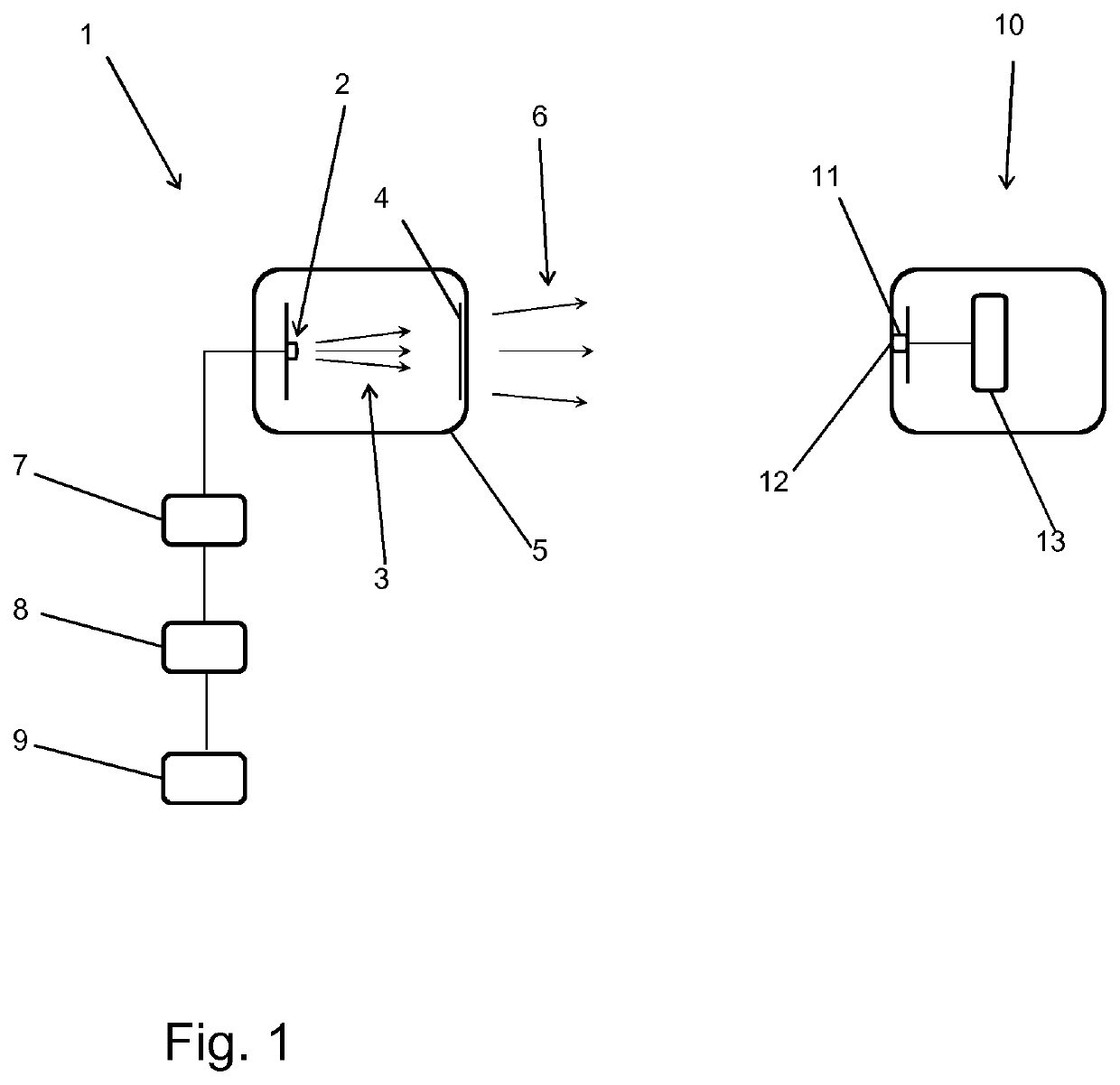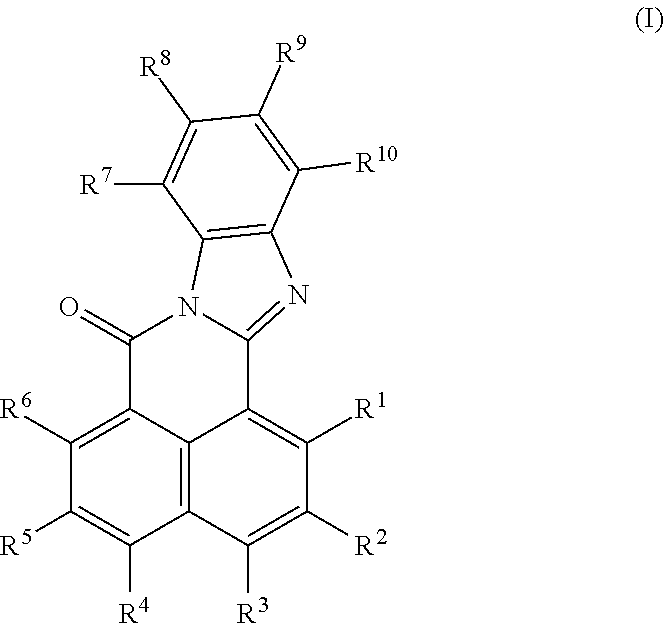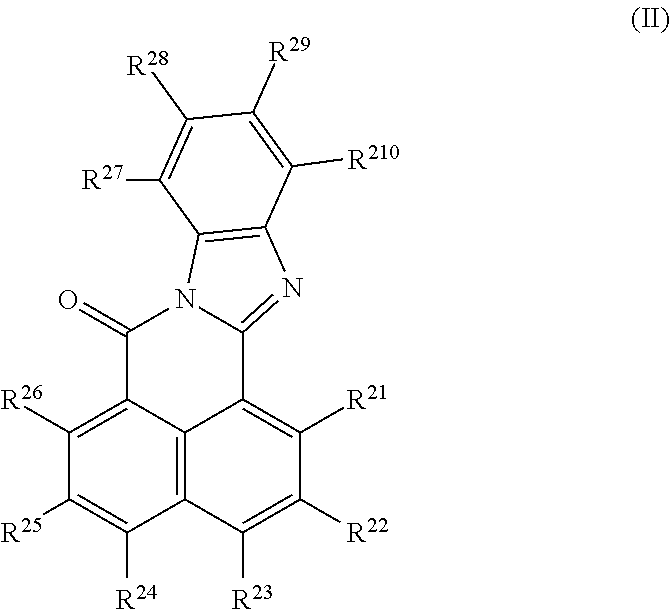Transmitter for transmitting data and for emitting electromagnetic radiation in the visible spectral range and data transmission system
a technology of electromagnetic radiation and transmitting data, which is applied in the direction of pyrene dyes, anthracene dyes, luminescent compositions, etc., can solve the problems of inability to directly emit white light, no led which can be used to emit white light, and the photoluminescence lifetime (fluorescent/phosphorescent lifetime or excited-state lifetime) of conventional phosphors is too long
- Summary
- Abstract
- Description
- Claims
- Application Information
AI Technical Summary
Benefits of technology
Problems solved by technology
Method used
Image
Examples
examples
[0481]The following figures and examples serve to illustrate the invention and should not be interpreted as limiting.
[0482]The following dyes 1 to 24 were employed in the examples.
Dye 1: (Colorant from Group B13)
N, N′-bis(2,6-diisopropylphenyl)-1,6,7,12-tetraphenoxyperylene-3,4:9,10-tetracarboximide
[0483]Dye 1 can be purchased from, e.g. from BASF SE.
Dye 2: (Colorant from Group B12)
diisobutyl 4,10-dicyanoperylene-3,9-dicarboxylate mixture with diisobutyl 4,9-dicyanoperylene-3,10-dicarboxylate
[0484]
[0485]Dye 2 can be purchased, e.g. from BASF SE.
Dye 3: (Colorant from Group B8)
[0486]Dye 3 can be purchased, e.g. from BASF SE.
Dye 4: (Colorant from Group B8)
N,N′-Bis(2,6-diisopropylphenyl)-3,4,9,10-perylenetetracarboxylic diimide
[0487]
[0488]Dye 4 can be purchased, e.g. from BASF SE.
Dye 5: (Colorant from Group B13)
[0489]Dye 5 can be prepared in analogy to the methods described in EP 3072887.
Dye 6: (Colorant from Group B13)
[0490]A mixture of 2.2 g (2.6 mmol) of 1,6,7,12-tetrachloro-N,N′-2,6...
PUM
| Property | Measurement | Unit |
|---|---|---|
| wavelength | aaaaa | aaaaa |
| wavelength | aaaaa | aaaaa |
| center wavelength | aaaaa | aaaaa |
Abstract
Description
Claims
Application Information
 Login to View More
Login to View More - R&D
- Intellectual Property
- Life Sciences
- Materials
- Tech Scout
- Unparalleled Data Quality
- Higher Quality Content
- 60% Fewer Hallucinations
Browse by: Latest US Patents, China's latest patents, Technical Efficacy Thesaurus, Application Domain, Technology Topic, Popular Technical Reports.
© 2025 PatSnap. All rights reserved.Legal|Privacy policy|Modern Slavery Act Transparency Statement|Sitemap|About US| Contact US: help@patsnap.com



